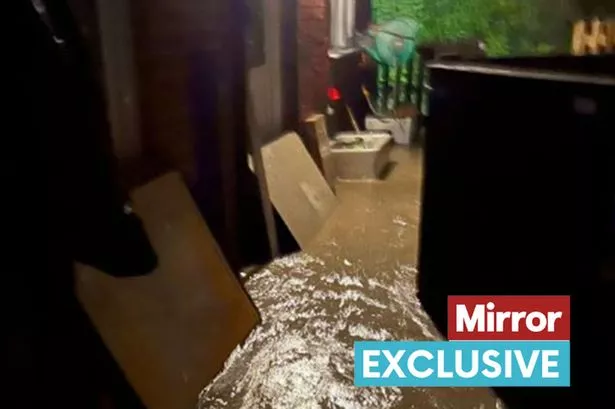Pauline’s world has been twice submerged in the murky depths of floodwater, leaving behind a trail of devastation that has not only impacted her home but also crippled her livelihood. The culprit, she believes, lies just beyond her property line: a vast, sloping field owned by a local farmer. She contends that changes in the field’s drainage patterns, possibly due to altered plowing practices or the installation of new drainage systems, have redirected the natural flow of water, channeling it directly towards her property during periods of heavy rainfall. Each flood has left a wake of destruction, damaging furniture, appliances, and structural elements of her home, and forcing the closure of her attached business, impacting her income and future prospects. Now, with the grim specter of future floods looming, Pauline is demanding action from the farmer, urging him to acknowledge the problem and implement preventative measures to protect her property from further inundation.
The first flood arrived without warning. A sudden, torrential downpour overloaded the local drainage systems, and Pauline watched in horror as water began to encroach upon her property. Within hours, the floodwaters had infiltrated her home and business, leaving a thick layer of mud and debris in their wake. The impact was immediate and devastating: furniture warped and rotted, appliances short-circuited, and the inventory for her business was ruined. The stagnant water also brought with it the insidious threat of mold, posing a health hazard and adding yet another layer of complexity to the already daunting cleanup process. The financial burden was immense, with insurance covering only a portion of the damage, forcing Pauline to shoulder the remaining costs of repairs and replacement. Weeks turned into months as she struggled to rebuild her life, battling insurance adjusters, contractors, and the lingering emotional trauma of the disaster.
The second flood, arriving just months after the first, compounded the devastation and cemented Pauline’s conviction that the neighboring field was the source of the problem. The same scenario unfolded: heavy rainfall, rapidly rising water levels, and the inevitable inundation of her property. This time, however, the damage was even more extensive. The weakened structure of her home was further compromised, and the newly replaced inventory for her business was once again destroyed. The emotional toll was also amplified; the sense of vulnerability and helplessness intensified, leaving Pauline with a deep-seated fear of every approaching storm. The repeated flooding had transformed her home from a sanctuary into a source of constant anxiety and uncertainty.
Pauline’s suspicions about the neighboring field stemmed from observations she made during and after the floods. She noticed that the water flow seemed to originate from the field, following newly carved channels in the soil and converging towards her property. She also recalled that the farmer had recently altered his plowing practices, switching from contour plowing, which helps retain water, to up-and-downhill plowing, which can accelerate water runoff. Furthermore, she suspected that the installation of new drainage tiles in the field might have exacerbated the problem by channeling water more efficiently towards her property. These observations led Pauline to believe that the changes in the field’s land management practices had inadvertently created a direct pathway for water to flow onto her property during heavy rainfall.
Determined to prevent a third disaster, Pauline contacted the farmer to discuss her concerns. She explained the impact the floods had had on her life, detailing the financial losses, the emotional distress, and the constant fear of future inundations. She presented her observations about the changes in the field’s drainage and implored the farmer to consider implementing preventative measures. Her suggestions included reverting to contour plowing, installing water retention features such as terraces or swales, and reviewing the placement and function of the drainage tiles. She emphasized that these measures could not only protect her property but also benefit the farmer by improving soil health and reducing erosion. Initially, the farmer was resistant, dismissing Pauline’s concerns and attributing the flooding to unprecedented rainfall. However, Pauline persisted, providing photographic evidence of the water flow patterns and offering to collaborate on finding a mutually agreeable solution.
The ongoing dialogue between Pauline and the farmer highlights the complex interplay between land management practices and the downstream consequences for neighboring properties. While the farmer has the right to manage his land as he sees fit, he also has a responsibility to ensure that his actions do not negatively impact others. Pauline’s case underscores the need for open communication and collaboration between landowners to address drainage issues and mitigate the risk of flooding. The situation also raises broader questions about the adequacy of existing regulations and the responsibility of local authorities to ensure that land use practices do not create hazards for surrounding properties. The outcome of this ongoing dialogue remains uncertain, but Pauline remains resolute in her pursuit of a solution that will protect her home, her business, and her peace of mind.














